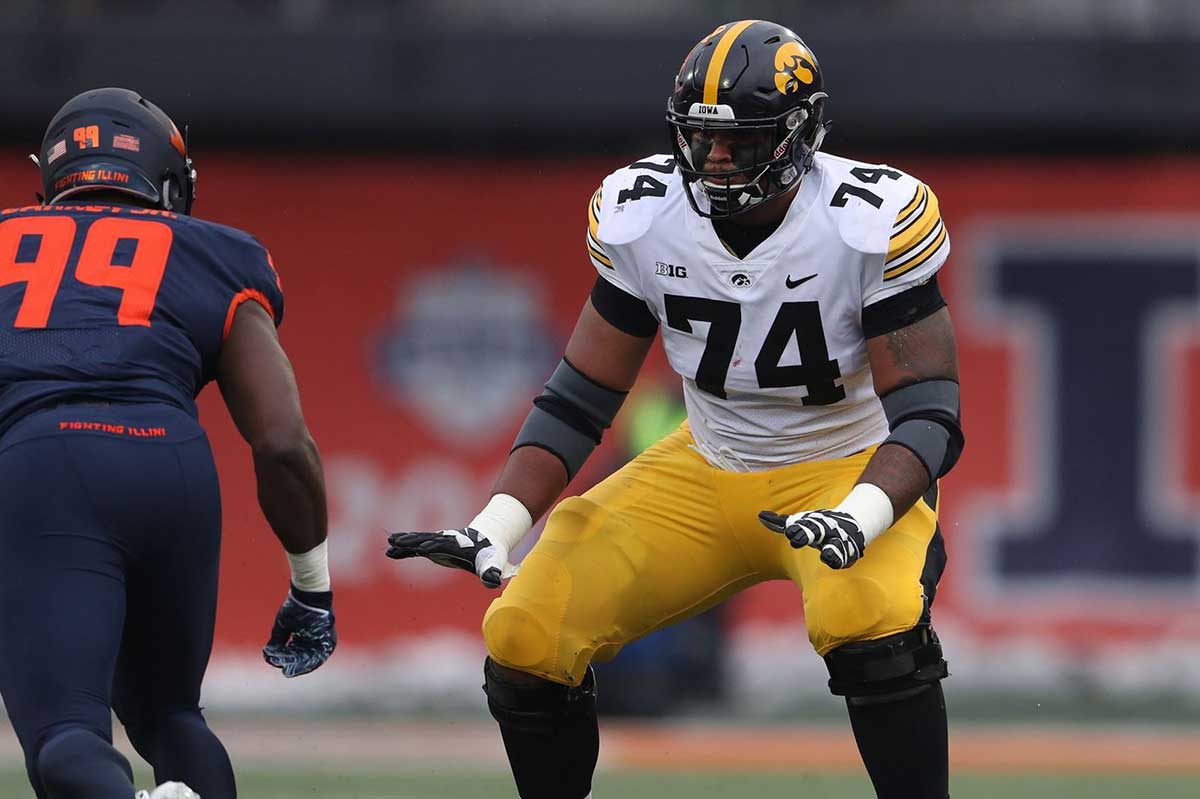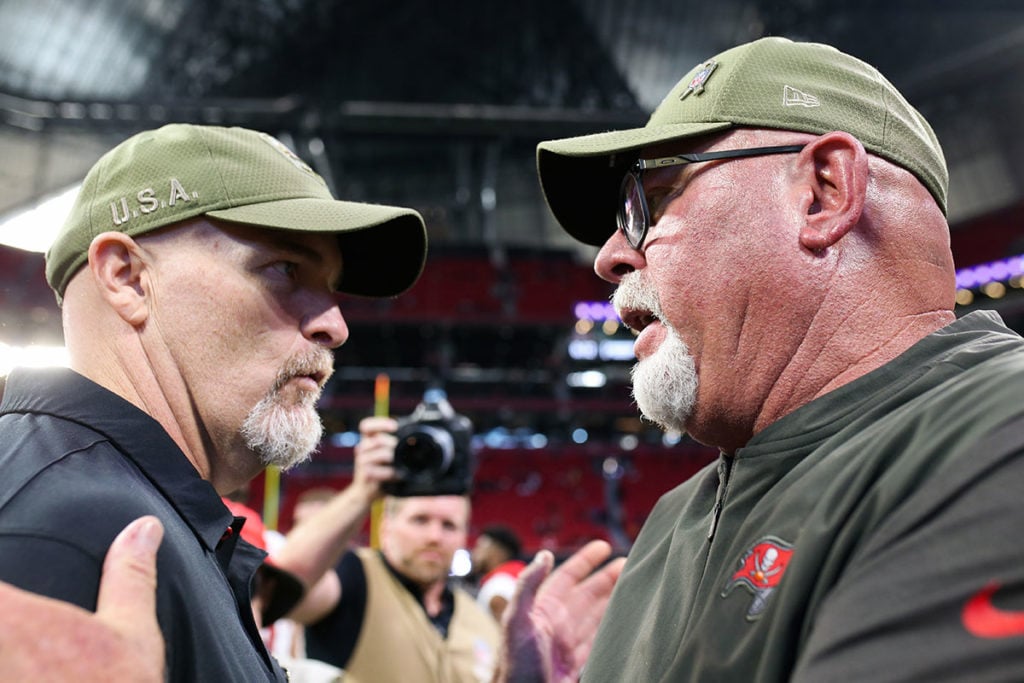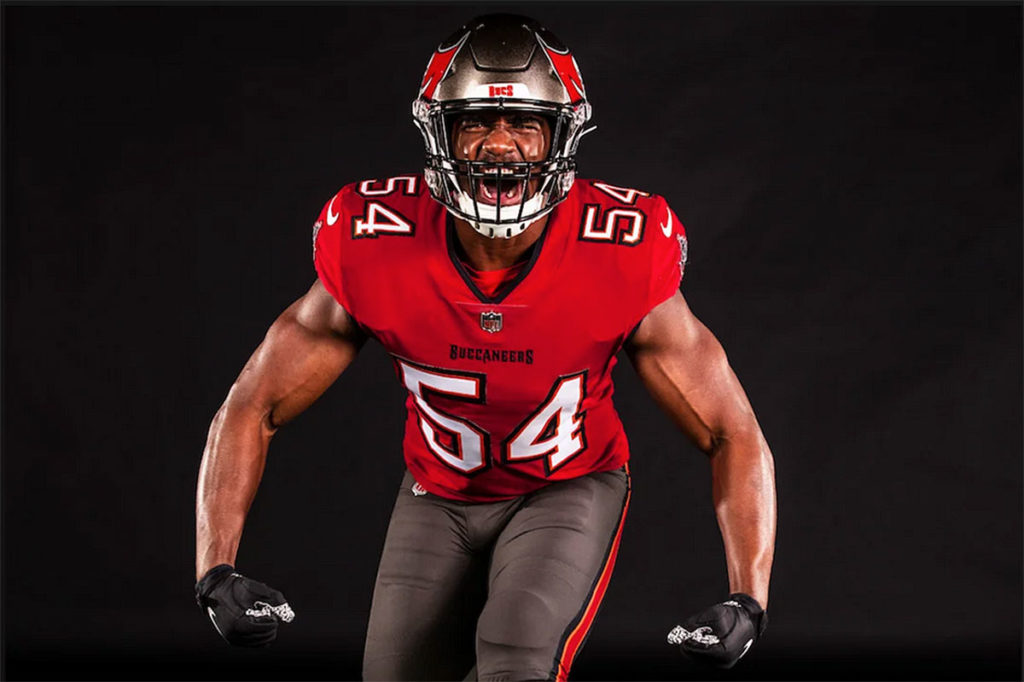In one of the most important drafts in franchise history amidst challenging circumstances no one could have foreseen a few months ago, general manager Jason Licht and the Tampa Bay Buccaneers front office crushed the 2020 NFL Draft.
I mean, crushed it.
One of the tricky aspects of drafting in a clear “win now” window is that you don’t want to completely abandon building for the future, but you also want to fill needs/holes and find players that aren’t going to take three years to see the field.
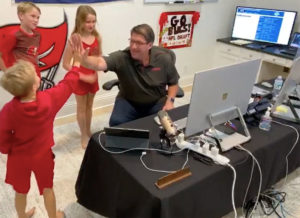
Charlie, Theo, Zoe and Bucs GM Jason Licht – Photo courtesy of Peter King on Twitter
That’s why you have to love what Licht did with this draft. Jumping up one spot to secure Iowa right tackle Tristan Wirfs and make sure the 49ers didn’t take their left tackle of the future was a necessary move to fill the Bucs’ hole at right tackle. But Wirfs is also a high ceiling player who will continue to get better. Under good coaching, he has the traits and peak plays to become the best tackle in the class. He just needs to perfect the details.
In the second round, the Bucs made it clear that they are also skeptical of Justin Evans’ availability, filling the final hole on their depth chart by drafting Minnesota’s Antoine Winfield with the 45th overall pick. Could the rookie start and be the quarterback of the Bucs young secondary?
This Bucs Briefing won’t focus as much on tape as it will examining the potential impact of Tampa Bay’s rookie class, and setting expectations where it should be as the summer nears. Beginning next week, I’ll be reviewing Bucs games from this past season, selecting three players to evaluate in-depth each week in Bucs Briefing.
By the time the season arrives, all 22 starters and several valuable depth pieces will have been written up in my Wednesday morning column, giving you a detailed look at the positives and negatives of each Bucs player heading into the 2020 season.
But first, let’s take one last intentional look at the 2020 rookie class and how its impact on Tampa Bay’s upcoming season could be pivotal in this franchise’s pursuit of a second Super Bowl title.
Round 1, Pick 13 – Iowa OT Tristan Wirfs
Reason for Optimism: One of the hiccups with the Bucs drafting Louisville’s Mekhi Becton or Georgia’s Andrew Thomas would have been a potential position switch. Both tackles have played on the right side, but their best tape had come on the left side. And even if you believed they could make the move in the NFL and be just as effective, it was still a projection with an element of risk.
With Wirfs, his best football has come on the right side, and he really looked comfortable there over the second half of last season. Not having to worry about a position switch right away is huge for a rookie the Bucs are hoping will hit the ground running. He’s also been battle tested against quality edge rushers like Michigan’s Josh Uche, Mississippi State’s Montez Sweat and others, so you don’t have to worry about the level of competition like you would have had to with Houston’s Josh Jones or Boise State’s Ezra Cleveland either.
All of Tristan Wirfs’ meaningful pass-blocking snaps against Michigan’s Josh Uche (2019)
Wirfs wins the matchup, but some of Uche’s reps are really impressive — I think Uche would be getting more first-round hype if he tested at the Combine.pic.twitter.com/r4RRBwyoR2
— Austin Gayle (@PFF_AustinGayle) April 20, 2020
As for ability, Wirfs will enter the NFL as one of the most athletic offensive tackles of all-time. That’s not a typo. Per Mock Draftable, Wirfs’ 40-yard dash of 4.85 was in the 97th percentile for offensive tackles, and his broad (10’1″) and vertical (36.5) jumps were each in the 99th percentile. His three-cone and short shuttle were both well above average as well, with the former reaching the 72nd percentile for the position.
Combine those traits with Wirfs’ 6-foot-5, 320-pound frame, 34-inch arms and 10 1/4-inch hands, and you have a made-in-a-lab offensive tackle prospect. Technically, there is room to grow, but Wirfs started to find more consistency as a pass protector down the stretch last season, showing more explosiveness out of his stance and more confidence in reaching his set points.
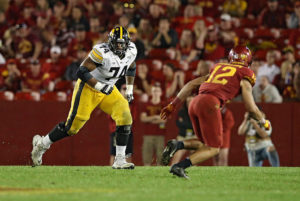
Bucs RT Tristan Wirfs – Photo courtesy of Iowa
Physically and athletically, there is little he can’t do, but offensive line is so much about technique that it was important to see him grow that way during his junior season. Almost every collegiate offensive tackle has a good amount of work to do in order to dominate in the NFL, but Wirfs will be closer to that goal than many of his positional counterparts over the years.
Reason for Concern: Despite dominant traits, Wirfs did not consistently dominate the college football field, especially in the run game. His footwork and hand placement can improve, and he needs to attack with more urgency off the ball. At times you see him displace opponents and finish, at other times he falls off blocks too easily.
Wirfs is also still growing as a pass protector, and perhaps no position is as difficult to adjust to in the NFL as offensive tackle. The level of competition is just so much greater than even the best pass rushers in college football typically are.
Year 1 Expectations: I expect all rookie offensive tackles to struggle if left on an island in pass protection, so the Bucs should scheme help for Wirfs in the form of chips or sliding protections against certain matchups. That said, part of the growth process for the rookie tackle will be picking himself up after some beat-downs this season.
Wirfs has been starting since his true freshman season at Iowa. He’s never stepped onto a football field and not been among the two or three most physically and athletically talented players in the game. In the NFL, that won’t be the case. How he responds to adversity, both on and off the field, will shape the type of career Wirfs is going to have in the NFL.
Click Below For My Round 2 Evaluation
Jon Ledyard is PewterReport.com's newest Bucs beat writer and has experience covering the Pittsburgh Steelers as a beat writer and analyzing the NFL Draft for several draft websites, including The Draft Network. Follow Ledyard on Twitter at @LedyardNFLDraft

